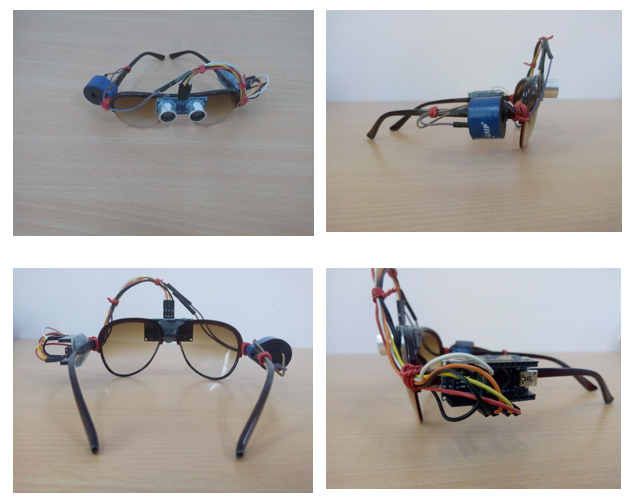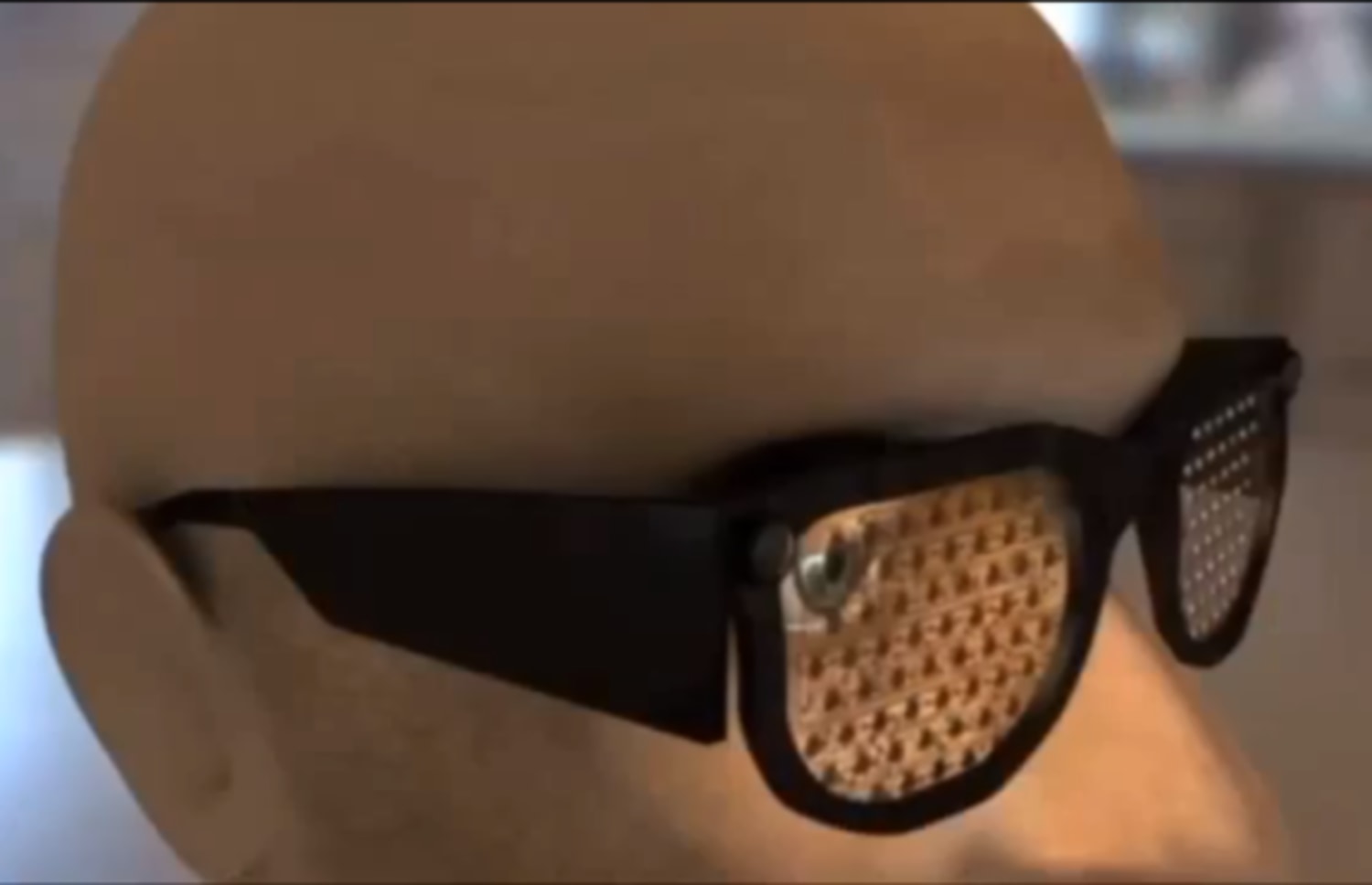How Smart Glasses for the Visually Impaired Are Revolutionizing Daily Life
How Smart Glasses for the Visually Impaired Are Revolutionizing Daily Life
Blog Article
Enhancing Availability With Assistive Technology for the Blind
The assimilation of assistive technology for the blind stands for a pivotal development in accessibility, fundamentally changing how people navigate their settings and engage with culture. From display visitors to cutting-edge smart canes, these tools not only enhance independence yet also promote inclusivity in numerous spheres of life. As we check out the diverse kinds of assistive tools and their tangible effects on day-to-day living, it becomes necessary to take a look at just how recurring technological developments are improving the landscape of assistance for the blind community. What ramifications do these growths hold for the future of ease of access?
Introduction of Assistive Innovation
Assistive innovation refers to a variety of tools and software program designed to boost the abilities of individuals with impairments, including those who are blind or aesthetically damaged. This modern technology plays a critical function in advertising independence and boosting the top quality of life for individuals. By supplying alternate approaches for accessing details and performing day-to-day jobs, assistive technology encourages people to navigate their atmospheres a lot more effectively.
The growth and application of assistive modern technology welcome a selection of concepts intended at promoting accessibility. These concepts include user-centered design, which prioritizes the needs and choices of the person, and the integration of innovation into everyday tasks. Such improvements guarantee that assistive devices are not only functional but also instinctive and simple to make use of.
In addition, assistive modern technology encompasses a varied range of solutions, from low-tech options like magnifiers to modern developments such as display readers and Braille displays. The continuous evolution of this field is driven by the demand to resolve the one-of-a-kind challenges faced by people with visual impairments (Wearable technology for low vision). As technology remains to breakthrough, the potential for enhancing accessibility and promoting inclusivity continues to be encouraging, ultimately adding to a more equitable society

Kinds Of Assistive Gadgets
Numerous kinds of assistive gadgets are available to support individuals that are blind or visually damaged, each made to address particular needs and obstacles. These devices can be generally categorized right into three major types: low-tech, mid-tech, and state-of-the-art services.
Low-tech devices consist of items such as magnifiers, Braille tags, and tactile maps. These are reasonably easy tools that improve the individual's capability to interact with their environment without calling for complicated innovation.
Mid-tech devices usually entail advanced features, such as electronic magnifiers and mobile Braille note-takers. These tools can use functionalities like speech outcome, permitting users to access info much more effectively.

Influence on Daily Living
The accessibility of numerous assistive gadgets considerably enhances the lifestyle for individuals who are blind or visually damaged, influencing their day-to-day living in extensive methods. By integrating innovations such as screen readers, Braille shows, and audio description services right into their regimens, customers obtain better autonomy and freedom. These tools help with accessibility to info, enabling people to do day-to-day jobs, such as reviewing emails, browsing public areas, and enjoying media material.
Moreover, assistive gadgets equip individuals to involve even more totally in social communications and area activities. The capacity to use mobile phones outfitted with ease of access functions permits for smooth interaction and link with others. This connection promotes a sense of belonging and reduces feelings of seclusion.
In professional setups, assistive modern technology sustains productivity by permitting individuals to full job tasks efficiently. Tools like voice acknowledgment software program and specialized magnifying gadgets allow customers to join the workforce on equivalent footing with their sighted peers.

Advancements in Technology
Recent technological improvements have substantially transformed the landscape of dig this devices offered for people that are blind or visually impaired. The combination of expert system (AI) and machine learning has generated applications that improve navigation and things recognition. For instance, mobile phone applications can now make use of AI to identify and define environments in real-time, providing customers with important contextual info.
Furthermore, innovations in haptic innovation have actually resulted in the growth of smart canes furnished with sensing units that spot barriers and provide responsive comments. This empowers individuals to browse their setting with enhanced confidence and independence. Additionally, technologies in text-to-speech software program and braille display screens have actually enhanced the availability of electronic content, permitting smooth interaction with different media.
Wearable technologies, such as smart glasses, are also making strides in assisting aesthetic impairment. As technology proceeds to evolve, the possibility for even more transformative devices remains on the perspective.
Future Trends and Innovations
As technology swiftly progresses, the future of assistive devices for people that are blind holds enormous promise. Innovations in expert system (AI) and device understanding are positioned to change the means blind users engage with their environments. AI-driven applications are being established to boost item recognition, allowing customers to determine and navigate their surroundings with greater ease and accuracy.
Moreover, improvements in haptic comments innovation are allowing the development of responsive maps and navigation aids that give real-time information through touch. These innovations not only boost wheelchair however also foster self-reliance. In addition, wearable devices furnished with enhanced reality (AR) attributes my website are emerging, supplying users aesthetic information through audio descriptions, therefore bridging the gap in between the physical and electronic worlds.
Furthermore, the assimilation of clever home technology provides brand-new opportunities for ease of access, allowing individuals to manage their living settings through voice commands or smartphone applications. As cooperation between tech developers and the blind area proceeds, the emphasis on user-centered style will make certain that future advancements are customized to meet the special needs of this population (Wearable technology for low vision). The trajectory of assistive innovation promises a much more empowering and comprehensive future for individuals who are blind
Final Thought
Finally, assistive technology plays an important duty in improving availability for individuals with aesthetic problems. The varied variety of tools, consisting of screen viewers and wise walking canes, considerably boosts day-to-day living and fosters independence. Constant improvements in technology and user-centered layout ensure that these devices cater effectively to the one-of-a-kind demands of the blind area. As advancements development, raised inclusivity and empowerment can be prepared for, eventually enriching the quality of life for those impacted by aesthetic problems.
The assimilation of assistive technology for the blind represents a pivotal development in ease of access, basically modifying exactly how people navigate their environments and involve with society.Assistive technology refers to a variety of tools and software designed to improve the capacities of individuals with handicaps, including those that are blind or aesthetically damaged. Wearable technology for low vision.As modern technology quickly advances, the future of assistive devices for individuals that are blind holds immense assurance. The trajectory of assistive innovation assures a more inclusive and empowering future for individuals who are blind
In final thought, assistive innovation plays an important duty in enhancing Resources access for people with visual disabilities.
Report this page